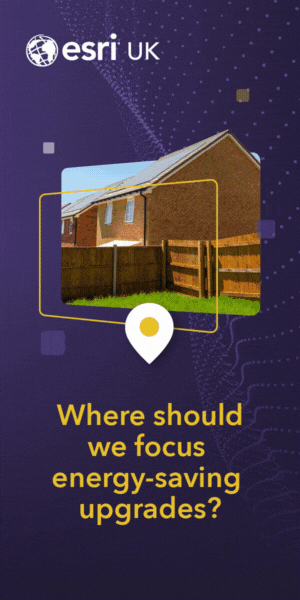Scottish Government
|
|
Scottish House Condition Survey: 2019 Key Findings
A National Statistics Publication for Scotland
The Chief Statistician has released figures on fuel poverty, energy efficiency, the condition of housing and other key descriptors of the occupied housing stock in Scotland. This is the first release of information from the Scottish House Condition Survey (SHCS) for 2019.
In 2019 the level of fuel poverty remained similar to 2018: 24.6% or 613,000 households were fuel poor, with 12.4% or 311,000 households living in extreme fuel poverty. This compares to the 25.0% or 619,000 fuel poor households in 2018, with 11.3% or 279,000 households in extreme fuel poverty.
There has been little change in the fuel poverty rate over the past four years, but there has been a reduction from the peak of 31.7%, or 761,000 households, in 2013. Although similar to 2018, levels of extreme fuel poverty have also decreased from 16% (384,000 households) in 2013.
The median fuel poverty gap (adjusted for 2015 prices) for fuel poor households in 2019 (£700) is higher than in 2018 (£610) but similar to the median gap in 2012 to 2017.
In 2019, 45% of Scottish homes were in the highest energy efficiency bands, C or better, and half had an energy efficiency rating of 67 or higher (using Standard Assessment Procedure 2012, Reduced Data Standard Assessment Procedure version 9.93).
Using Standard Assessment Procedure 2009 allows the longer-term trend to be explored and shows strong improvement in the energy efficiency profile of housing. The share of those rated C or better, increased from 24% in 2010 to 51% in 2019. In the same period, the proportion of properties in the lowest EPC bands (E, F or G) more than halved, reducing from 27% to 12%.
Disrepair to critical elements reduced from 57% in 2018 to 52% in 2019 but is similar to 2017 (50%). Less than half of these (19% of all dwellings) had urgent disrepair to critical elements and just 1% of all dwellings had extensive disrepair (at least a fifth of the area) to critical elements.
The Scottish Housing Quality Standard failure rate in the social sector (41%) was not statistically significantly different to 2018 (35%), but down from 60% in 2010. Data collected through the survey does not allow for abeyances and exemptions taken into account by the Scottish Housing Regulator. It may not always be possible to identify the presence of cavity wall insulation and, if it is assumed that all social dwellings have insulated cavity walls where technically appropriate, the failure rate would be 28%.
Background
The Scottish House Condition Survey 2019: Key Findings.
A summary infographics report.
The figures presented in the 2019 Key Findings Report are a best estimate of fuel poverty rates, extreme fuel poverty rates and the median fuel poverty gap under the new definition of fuel poverty, as set out in the Fuel Poverty (Targets, Definition and Strategy) (Scotland) Act. They reflect amendments made to the legislation during the Bill process up to and including Stage 2.
The first set of fuel poverty estimates fully compatible with all of the elements of the new definition in the Fuel Poverty (Targets, Definition and Strategy) (Scotland) Act, including the Stage 3 amendments, the Fuel Poverty (Enhanced Heating) (Scotland) Regulations 2020 and the Fuel Poverty (Additional Amount in respect of Remote Rural Area, Remote, Small Town and Island Area) (Scotland) Regulations 2020, require additional information to be collected through the survey. The production of a new Minimum Income Standard (MIS) for Remote Rural, Remote Small Town and Island areas is also required. The MIS for Remote Rural, Remote Small Town and Island areas applied to the estimates in this publication continues to be estimated based on previous studies.
The 2020 SHCS fieldwork has been suspended since 17 March due to the effects of COVID-19. Therefore it may be 2021 or later until all additional information is collected to fully account for all the elements of the new definition in the SHCS fuel poverty estimates.
The Scottish House Condition Survey is a sample survey, hence all figures are subject to a degree of uncertainty due to sampling variability. It is a two-part survey combining both an interview with occupants and a physical inspection of dwellings. The sample size in 2019 was 2,997 dwellings where both an interview and a physical survey were conducted.
Local Authority tables giving breakdowns of key SHCS measures will be published in February 2021. Local Authority estimates use combined data over the three year survey period (2017-2019), in order to obtain suitable sample sizes.
Statistics from the SHCS are used for a variety of purposes including:
- to monitor changes in the condition of the Scottish housing stock
- to monitor changes in rates of fuel poverty, extreme fuel poverty and the median fuel poverty gap and to provide evidence of the types of households vulnerable to fuel poverty
- to monitor commitments for all social sector landlords in relation to the Scottish Housing Quality Standard
- to monitor commitments to improve the energy efficiency of Scottish housing to contribute to the reduction of emissions as set out in the Climate Change (Scotland) Act, 2009
- to monitor progress on National Performance Framework Indicators
- to monitor progress on Housing and Regeneration Outcome Indicators
Further information on Housing and Regeneration statistics within Scotland is available.
National statistics are produced by professionally independent statistical staff in accordance with the Code of Practice for Statistics.
Original article link: https://www.gov.scot/news/scottish-house-condition-survey-2019-key-findings/


